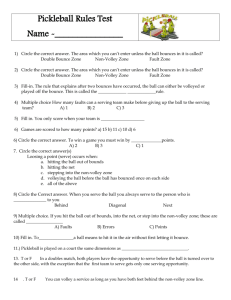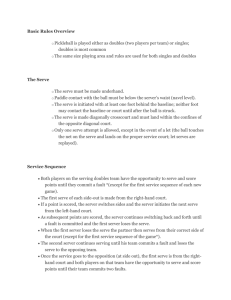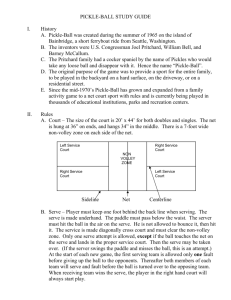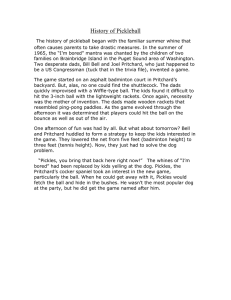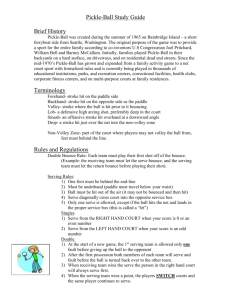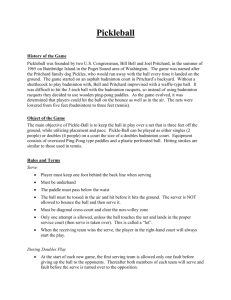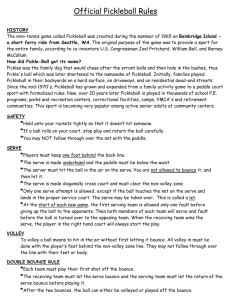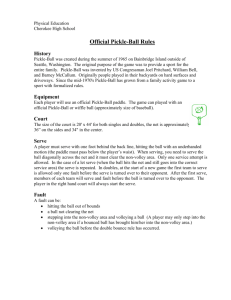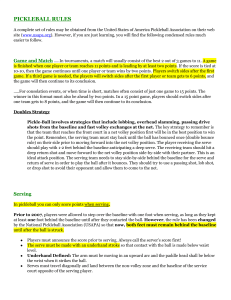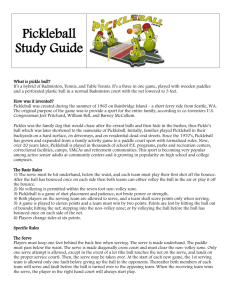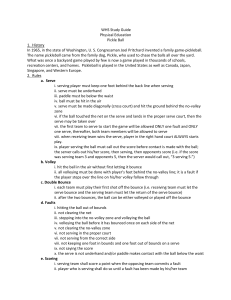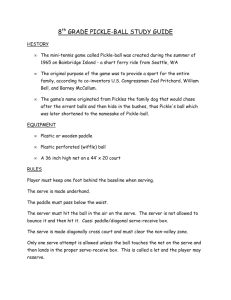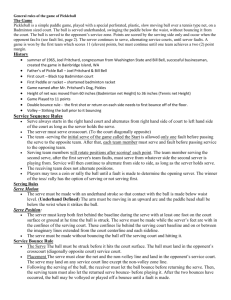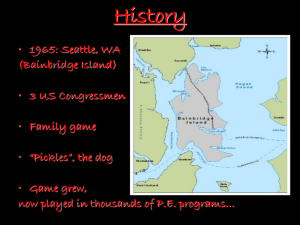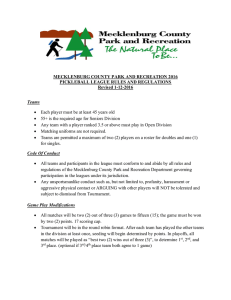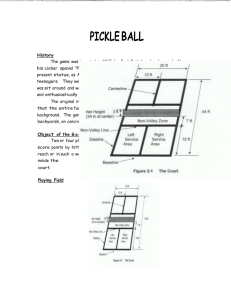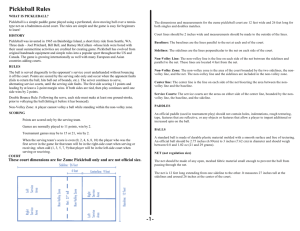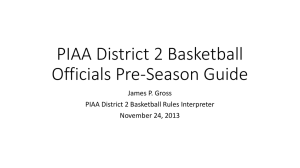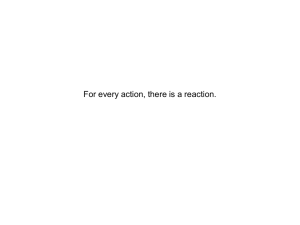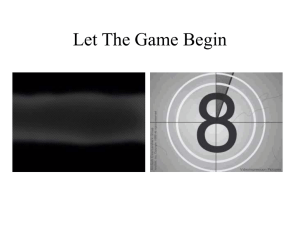PICKLEBALL
advertisement
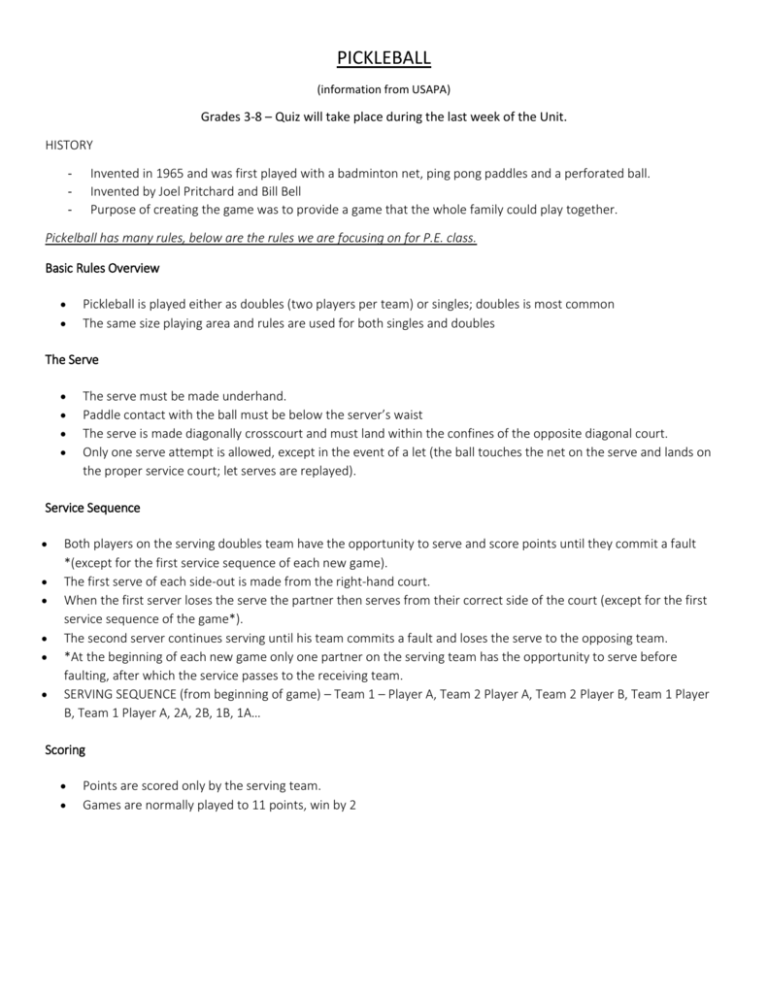
PICKLEBALL (information from USAPA) Grades 3-8 – Quiz will take place during the last week of the Unit. HISTORY - Invented in 1965 and was first played with a badminton net, ping pong paddles and a perforated ball. Invented by Joel Pritchard and Bill Bell Purpose of creating the game was to provide a game that the whole family could play together. Pickelball has many rules, below are the rules we are focusing on for P.E. class. Basic Rules Overview Pickleball is played either as doubles (two players per team) or singles; doubles is most common The same size playing area and rules are used for both singles and doubles The Serve The serve must be made underhand. Paddle contact with the ball must be below the server’s waist The serve is made diagonally crosscourt and must land within the confines of the opposite diagonal court. Only one serve attempt is allowed, except in the event of a let (the ball touches the net on the serve and lands on the proper service court; let serves are replayed). Service Sequence Both players on the serving doubles team have the opportunity to serve and score points until they commit a fault *(except for the first service sequence of each new game). The first serve of each side-out is made from the right-hand court. When the first server loses the serve the partner then serves from their correct side of the court (except for the first service sequence of the game*). The second server continues serving until his team commits a fault and loses the serve to the opposing team. *At the beginning of each new game only one partner on the serving team has the opportunity to serve before faulting, after which the service passes to the receiving team. SERVING SEQUENCE (from beginning of game) – Team 1 – Player A, Team 2 Player A, Team 2 Player B, Team 1 Player B, Team 1 Player A, 2A, 2B, 1B, 1A… Scoring Points are scored only by the serving team. Games are normally played to 11 points, win by 2 Double-Bounce Rule When the ball is served, the receiving team must let it bounce before returning, and then the serving team must let it bounce before returning, thus two bounces. After the ball has bounced once in each team’s court, both teams may either volley the ball (hit the ball before it bounces) or play it off a bounce (ground stroke). Non-Volley Zone The non-volley zone is the court area within 7 feet on both sides of the net. Volleying is prohibited within the non-volley zone. A player may legally be in the non-volley zone any time other than when volleying a ball. The non-volley zone is commonly referred to as “the kitchen.” Line Calls A ball contacting any line, except the non-volley zone line on a serve, is considered “in.” A serve contacting the non-volley zone line is short and a fault. Faults A fault is any action that stops play because of a rule violation. A fault by the receiving team results in a point for the serving team. A fault by the serving team results in the server’s loss of serve or side out. http://www.usapa.org/rules-summary/
